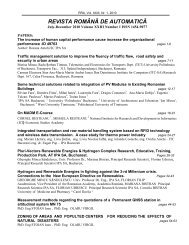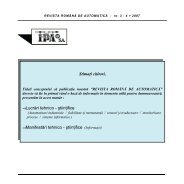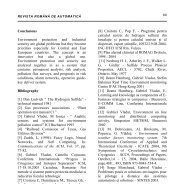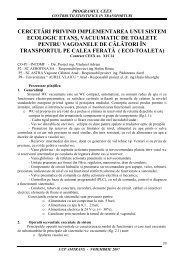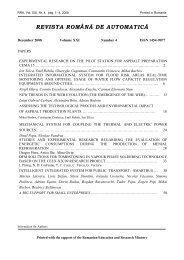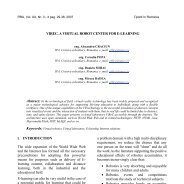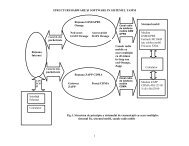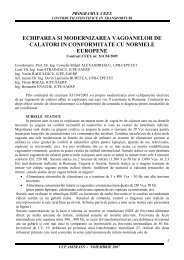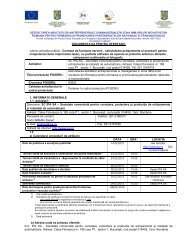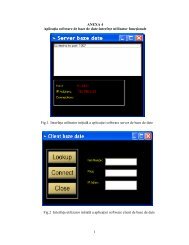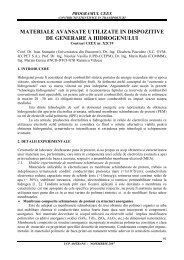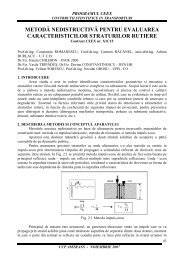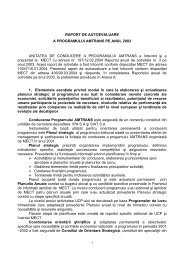Elementele componente ale reţelei Petri: Locaţii: P1 ... - IPA SA
Elementele componente ale reţelei Petri: Locaţii: P1 ... - IPA SA
Elementele componente ale reţelei Petri: Locaţii: P1 ... - IPA SA
You also want an ePaper? Increase the reach of your titles
YUMPU automatically turns print PDFs into web optimized ePapers that Google loves.
110<br />
REVISTA ROMÂN DE AUTOMATIC<br />
By compilation of this basic emission<br />
factors, using equations and different<br />
information from databases regarding engines<br />
types, fuel types, ships operation modes, time<br />
for every operational mode, number of ships,<br />
etc., one estimate the emissions level specific<br />
for a source (in our case the source is nonroad<br />
engines for inland navigation).<br />
The elements necessary to calculate basic<br />
emission factors for a steady working state<br />
(fig.2), are:<br />
Pollutant concentration in exhaust gases: c<br />
expressed in weight units/ weight units or<br />
volume%, (ppm, %)<br />
Fuel mass flow in the moment of the<br />
measurement: q (kg/h)<br />
Engine power in the measurement<br />
moment: P(kW)<br />
STEADY WORKING STATE<br />
Fuel: q(kg/h)<br />
Pollutant Power<br />
c (ppm) P(kW)<br />
BEFQ - basic emission factor BEFP - basic emission factor<br />
related to consumed fuel<br />
related to power produced by<br />
(kg/ton of fuel)<br />
consumed fuel (g/kW-h)<br />
Fig. 2<br />
The relation between BEFQ and BEFP is:<br />
BEFP = BEFQ x sfc x 10 -3 (g/kW-h), where: (1)<br />
sfc - is the specific fuel consumption (g/kWh);<br />
generally is an engine parameter given by<br />
the manufacturer in performances diagrams<br />
and differs according to the engine power.<br />
Basic emission factors are a characteristic of<br />
an engine under constant working conditions.<br />
For every steady working condition must be<br />
established a basic emission factor.<br />
Today are used emission factors that can be<br />
calculated by different methods:<br />
2.1. Direct measurements<br />
Measurements need to be collected over a<br />
period of time, to be representative for<br />
operations followed and to respect existent<br />
requirements and standards in the field.<br />
The European standard in exhaust emissions<br />
measurements is ISO 8178, “Reciprocating<br />
Internal Combustion Engines – Exhaust<br />
Emission Measurement,” that contains 9<br />
parts:<br />
• Part 1: Test-bed measurement of gaseous<br />
and particle exhaust emissions;<br />
• Part 2: Measurement of gaseous and particle<br />
exhaust emissions at site;<br />
• Part 3: Definitions and methods of<br />
measurement of exhaust gas smoke under<br />
steady-state conditions;



